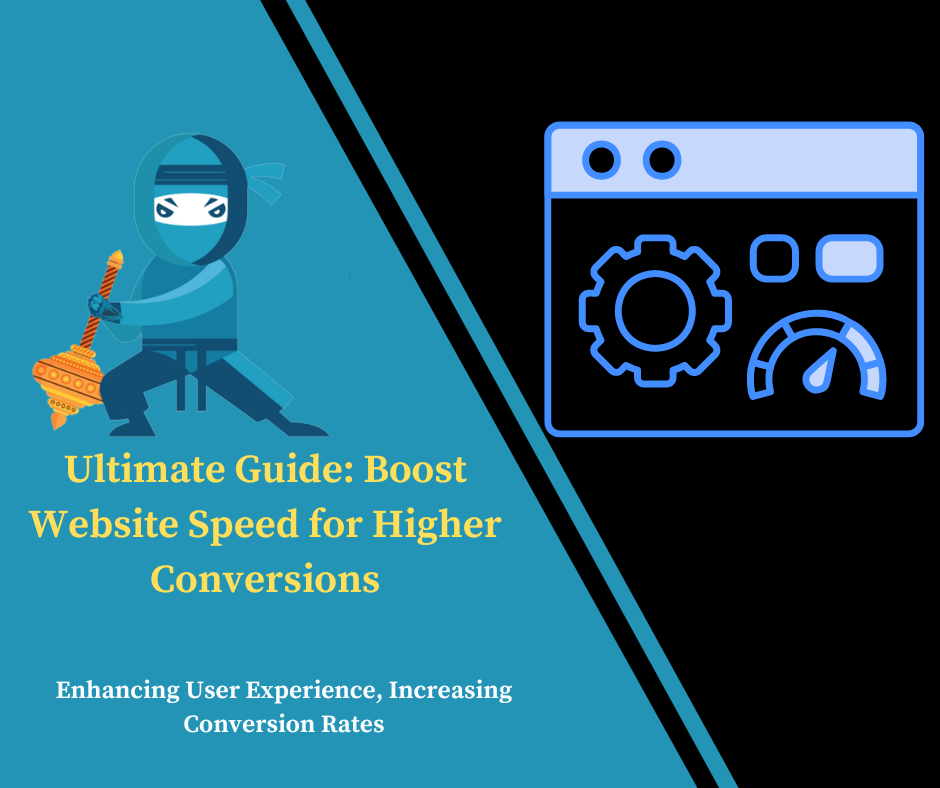Boost Website Speed for Higher Conversions
In today’s competitive digital landscape, website speed is more than just a performance metric—it’s a crucial factor that influences user experience, SEO rankings, and conversion rates. This comprehensive guide explores how boosting your website speed can lead to higher conversions and provides actionable strategies to achieve it.
The Importance of Website Speed
Website speed, the time it takes for a webpage to fully load and become interactive, plays a pivotal role in several key areas:
User Experience: Users expect instant gratification. Slow-loading pages frustrate visitors and often lead to higher bounce rates. A delay of just a few seconds can result in users abandoning your site, leading to lost opportunities and decreased satisfaction.
Conversion Rates: There is a direct correlation between website speed and conversion rates. Studies have shown that a one-second delay in page load time can reduce conversions by up to 7%. Faster websites create a smoother user experience, encouraging visitors to complete desired actions like making a purchase or signing up for a newsletter.
SEO Performance: Search engines, particularly Google, factor page speed into their ranking algorithms. A faster website is more likely to rank higher in search engine results pages (SERPs), leading to increased visibility and organic traffic.
Mobile Usability: With the rise of mobile browsing, ensuring that your site performs well on mobile devices is crucial. Mobile users often face slower network speeds and less powerful hardware, making it essential to optimize website speed for these devices.
Strategies to Boost Website Speed
Optimize Images and Videos
Compression: Large image files can significantly slow down your website. Use tools like TinyPNG, JPEG-Optimizer, or ImageOptim to compress images without a noticeable loss in quality. For videos, consider using streaming services or platforms like YouTube and Vimeo, which are optimized for performance.
Responsive Images: Implement responsive images using the srcset attribute in HTML. This ensures that the browser loads appropriately sized images based on the user’s device, reducing unnecessary data transfer.
Lazy Loading: Utilize lazy loading for images and videos, which delays the loading of non-critical assets until they are needed. This reduces the initial load time and improves the user experience.
Minimize HTTP Requests
Combine Files: Reducing the number of HTTP requests by combining CSS and JavaScript files can improve load times. Tools like Webpack or Gulp can automate this process.
Use CSS Sprites: Combine multiple small images into a single sprite sheet to reduce the number of image requests. This technique is particularly useful for icons and small graphics.
Leverage Browser Caching
Set Expiry Dates: Configure your server to set expiry dates for static resources like images, CSS, and JavaScript files. This instructs browsers to cache these resources, so they don’t need to be reloaded on subsequent visits.
Versioning: Implement versioning for your files by including version numbers in the filenames or URLs. This ensures that users receive updated files when changes are made, while still benefiting from caching for unchanged files.
Also read: How to Upselling & Cross-Selling for E-Commerce Growth?
Enable Compression
Gzip Compression: Enable Gzip compression on your web server to reduce the size of files sent to the browser. This can significantly decrease load times by compressing HTML, CSS, and JavaScript files before transmission.
Optimize Code
Minify CSS and JavaScript: Minification involves removing unnecessary characters from code files, such as whitespace and comments, to reduce their size. Tools like UglifyJS for JavaScript and CSSNano for CSS can assist in this process.
Eliminate Render-Blocking Resources: Ensure that critical CSS and JavaScript are loaded first. Defer or async non-essential resources to prevent them from blocking the rendering of the page.
Use a Content Delivery Network (CDN)
Distribute Content: A CDN distributes your website’s content across multiple servers globally, reducing the distance between the server and the user. This leads to faster load times by serving content from a location closer to the user.
Optimize Delivery: Many CDNs offer additional performance optimization features, such as caching, image optimization, and automatic content compression.
Optimize Your Server
Choose the Right Hosting Plan: Select a hosting plan that matches your website’s needs. Options range from shared hosting to VPS (Virtual Private Server) and dedicated servers. Investing in a higher-quality hosting plan can provide better performance and reliability.
Monitor Performance: Regularly monitor server performance using tools like New Relic or Pingdom. Address any issues promptly to maintain optimal performance.
Implement Asynchronous Loading
JavaScript: Use the async or defer attribute in your script tags to load JavaScript files asynchronously. This allows the page to render without waiting for JavaScript to load, reducing render-blocking issues.
Reduce Server Response Time
Optimize Database: Regularly clean and optimize your database to ensure efficient data retrieval. Tools like phpMyAdmin can help manage and optimize your database.
Use Efficient Queries: Write efficient SQL queries and implement indexing to speed up data access and retrieval.
FAQ
What is website speed and why is it important?
Website speed refers to the time it takes for a webpage to load completely and become interactive. It is important because it affects user experience, conversion rates, and SEO performance. A faster website improves user satisfaction, increases the likelihood of conversions, and enhances search engine rankings, leading to more traffic and better engagement.
How can I test my website’s speed?
To test your website’s speed, you can use various online tools such as Google PageSpeed Insights, GTmetrix, and Pingdom. These tools analyze your site’s performance, provide detailed reports on load times, and offer recommendations for improvements. By regularly testing your site, you can monitor performance and identify areas for optimization.
What is lazy loading and how does it help?
Lazy loading is a technique that defers the loading of non-critical assets, such as images and videos, until they are needed. This means that these assets are only loaded when they enter the user’s viewport, reducing the initial load time and improving overall page speed. Lazy loading helps enhance user experience by speeding up the page’s initial rendering and saving bandwidth.
What is browser caching and how does it improve website speed?
Browser caching involves storing static resources (like images, CSS, and JavaScript) in the user’s browser for a specified period. When a user revisits your site, the browser can load these resources from the local cache rather than requesting them from the server again. This reduces server load, speeds up page load times, and provides a smoother user experience.
What is Gzip compression and how does it work?
Gzip compression is a method of reducing the size of files sent from the server to the user’s browser. It works by compressing HTML, CSS, and JavaScript files before they are transmitted, which decreases the amount of data that needs to be transferred. Enabling Gzip compression can significantly speed up page load times and improve website performance.
How does a CDN improve website speed?
A Content Delivery Network (CDN) improves website speed by distributing your site’s content across multiple servers located around the world. This reduces the distance between the server and the user, resulting in faster load times. CDNs also offer additional features like caching, image optimization, and automatic compression, further enhancing performance.
Conclusion
Boosting your website speed is essential for enhancing user experience, increasing conversion rates, and improving SEO performance. By implementing the strategies outlined in this guide, you can optimize your website’s performance, leading to a more engaging user experience and higher conversion rates. Regularly monitor and maintain your site’s speed to stay ahead in the competitive digital landscape and ensure a seamless experience for your users.








